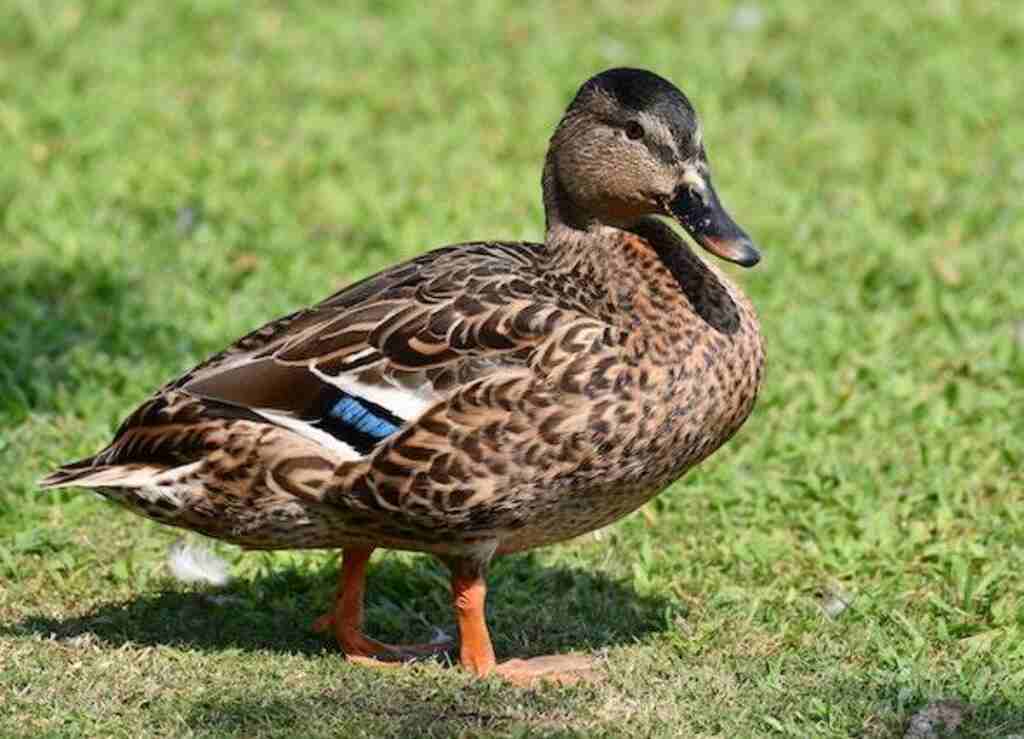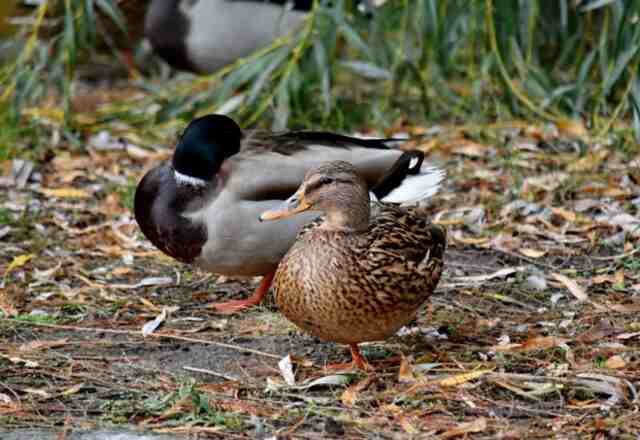Why do ducks bob their heads? It’s a question that has puzzled scientists and curious onlookers for years. Is it a form of communication? An instinctual behavior? Or perhaps they’re just getting a good stretch in.
Whatever the reason, this article will dive into the fascinating world of duck behavior and explore the many theories behind their iconic head-bobbing.
So, grab a seat by the pond and let’s quack our way through the mystery of the bobbing duck!
Table of Contents [show]
Brief overview of ducks and their behavior
Ducks are part of the family Anatidae, which also includes geese and swans. There are over 120 species of ducks, ranging in size from the tiny teals to the large eiders.
Most species have waterproof feathers that make them excellent swimmers. They use their webbed feet as paddles to propel themselves through water in search of food such as plants, insects, fish or shellfish.
Duck behavior is complex and varies between species; however, some common behaviors include mating rituals that can range from simple displays of courtship to elaborate dances performed by both males and females.
They also communicate with each other through an array of sounds, ranging from quacks to honks.
Explanation of the topic: why do ducks bob their heads?
Head bobbing is a common behavior exhibited by many duck species. It involves a quick up-and-down movement of the head while swimming or walking on land.
While it may look comical or even nonsensical to us humans, this behavior serves several important functions for ducks.
Importance of understanding this behavior
Understanding why ducks bob their heads can provide valuable insight into their biology and ecology.
Head bobbing may serve as a communication signal between individuals; it could also play a role in helping ducks locate food or predators while swimming through waterways.
Furthermore, examining this behavior may help conservationists better understand the natural environments where ducks live and how they interact with other species.
By studying the nuances of duck behavior, we can work to better protect and conserve these fascinating aquatic birds.

Physical Characteristics of Ducks
Anatomy of a duck’s neck and head
To understand why ducks bob their heads, it is essential to examine their physical characteristics. The neck and head are the most critical parts of a duck’s anatomy because they determine how the bird moves in the water, air, and on land.
The neck is relatively short and flexible, allowing ducks to move their heads in various directions quickly. In contrast, the head is relatively large compared to its body size.
The bill or beak is a unique feature of a duck’s head and plays an essential role in its behavior.
Duck bills vary in shape according to species, with some being broad and flat for straining food from water, while others are narrow for grasping prey.
Additionally, the bill has sensitive nerves that help ducks locate food efficiently.
How this anatomy affects their movement
Ducks move differently than other birds because of their unique anatomy. They swim by paddling their feet rather than flapping their wings like other birds.
The flexibility of their necks allows them to submerge underwater while keeping their bodies dry. The size of a duck’s head affects how it moves through water as well.
When swimming on the surface, ducks use small movements of their head to maintain balance while paddling with their feet rapidly.
When diving underwater for food or evading predators, they hold back on paddling with only using feet and use more significant movements with their necks so that they can see around them better.
Comparison to other birds
Ducks differ significantly from other types of birds such as raptors or songbirds because they have evolved specialized characteristics due to living primarily near water sources such as ponds or rivers.
Unlike most birds who fly mainly overhead without stopping at any particular place before continuing on again towards another destination elsewhere; ducks use both their wings and feet when on land or in water.
They also have unique anatomic adaptations to help them thrive both in and out of water that other birds do not.
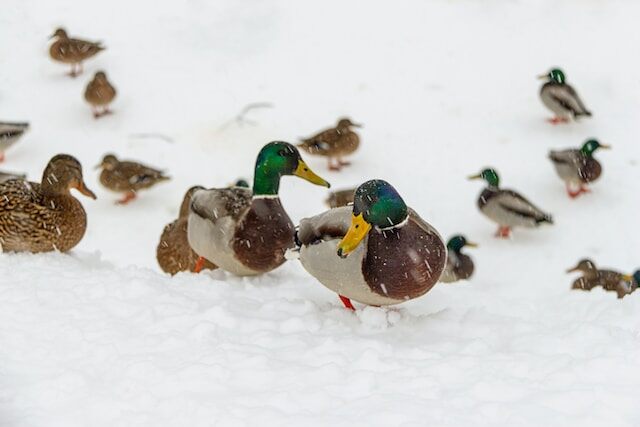
The Function of Head Bobbing in Ducks
Communication with other ducks
Ducks are social animals and use head bobbing as a form of communication with other ducks. When two or more ducks are in close proximity, they may bob their heads to indicate that they are friendly and not a threat.
This can be seen during feeding times when there is limited food available, or during social interactions such as grooming or preening.
The head bobbing behavior can also be used to establish dominance amongst the group, where the duck that bobs its head first is considered to be the leader.
Scanning for Food or Predators
Ducks use their excellent eyesight to scan for food or predators while swimming in the water. Head bobbing allows them to get a better view of what is happening above and below the surface of the water without having to fully submerge their bodies.
They can quickly spot insects, fish, or other prey items and dive to catch them. Conversely, if there is a potential predator nearby, such as a fox or hawk, ducks will bob their heads rapidly and repeatedly to alert others in the group of danger.
This behavior allows them to quickly communicate with each other without making any noise that might attract attention from predators.
Maintaining Balance while Swimming
Ducks have streamlined bodies that allow them to swim efficiently through water. However, this also means that they have less stability than birds with wider bodies, like geese or swans.
Head bobbing helps maintain balance by acting as a counterbalance when they paddle their feet underwater.
In fast-moving water currents, ducks must constantly adjust their body positions and shift their weight around for stability on the surface of the water.
Head bobbing helps them maintain balance while navigating these conditions so that they stay upright and avoid being swept away by strong currents.
Understanding the function of head bobbing in ducks provides valuable insight into their behavior and natural instincts.
It also highlights the importance of preserving wetland habitats, where ducks can thrive and continue to exhibit these fascinating behaviors.
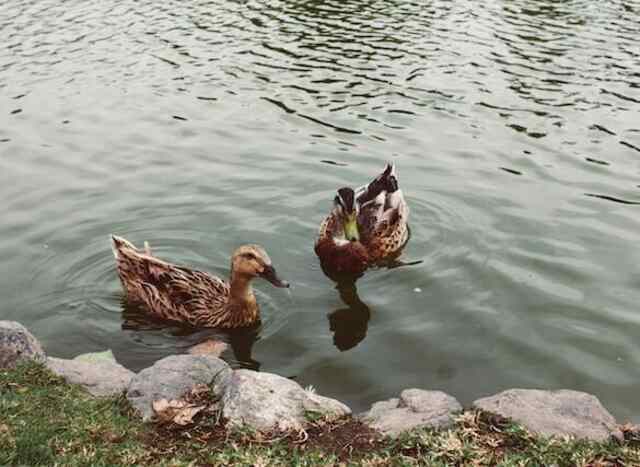
Different Types of Head Bobbing in Ducks
Aggressive head bobbing during mating season
During the mating season, ducks engage in a unique kind of head bobbing that is meant to impress potential mates. Male ducks, also known as drakes, will often lower their heads and then quickly jerk them up while simultaneously puffing out their chests.
This movement is accompanied by a low-pitched call that is meant to attract females. The aggressive head bobbing behavior is often seen in pairs, where the male duck tries to assert his dominance over other males and win over the female.
This behavior may look intense, but it’s actually a form of communication that helps establish social hierarchy among the ducks.
Ducks are highly social animals and use a lot of non-verbal communication to interact with one another. One such behavior is subtle head bobbing, which can be seen when ducks are greeting each other or establishing social bonds.
The subtle head bob involves a slow and gentle movement of the neck and head that can last for several seconds.
The duck may also accompany this movement with soft quacks or chirps. This behavior helps ducks recognize each other and develop strong social bonds among group members.
Rapid head movements while feeding
Ducks are omnivores and feed on both plants and animals. When feeding, they use rapid movements of their heads to locate food and capture it using their bills. Rapid head movements involve quick jerks of the neck as ducks scan the water or ground for food items.
Once they spot prey, they will use precise movements to capture it using their bills. This behavior is essential for survival since finding enough food can be challenging in some environments.
Overall, different types of head bobbing behaviors in ducks serve different purposes such as communication with other ducks, establishing social hierarchy, and finding food.
Understanding these behaviors helps us appreciate the complex social lives of ducks and their unique adaptations for survival in different environments.
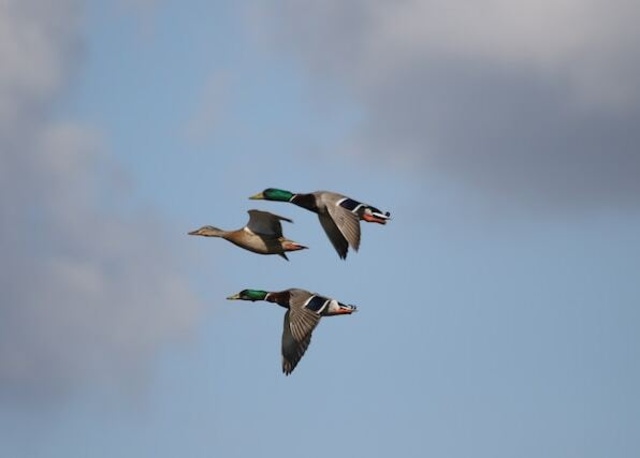
Factors that Affect Head Bobbing Behavior
Head bobbing behavior in ducks is not a one-size-fits-all phenomenon. In fact, there are many factors that influence how and when ducks bob their heads. Understanding these factors can provide insight into the complex world of duck behavior.
Environmental conditions such as water depth and temperature
The depth and temperature of the water can greatly impact a duck’s head bobbing behavior. When foraging for food, ducks need to be able to see underwater, so they will often dip their heads into the water and bob them up and down repeatedly.
If the water is too deep or murky, it can make it difficult for ducks to see their prey, leading to less head bobbing. Similarly, water temperature can also play a role in head bobbing behavior.
Ducks prefer shallower waters during colder months because they are easier to navigate and maintain body heat.
In deeper waters where temperatures are lower, ducks may spend more time diving than bobbing their heads due to the increased energy required to stay warm.
Age and gender differences in head bobbing behavior
Age and gender also play a role in duck head bobbing behavior. Younger ducks tend to engage in more exaggerated head movements than older ones, as they have not yet fully developed their coordination skills.
Additionally, male ducks typically exhibit more aggressive head movements during mating season, while female ducks tend to have more subtle movements during social interactions.
Furthermore, it has been observed that male domesticated ducks tend to engage in less head-bobbing behavior compared to their wild counterparts due to selective breeding practices that prioritize physical appearance over natural behaviors.
Differences between wild and domesticated ducks
Wild vs domestication has significantly impacted duck’s natural behaviors such as head-bobbing movement frequency or social interactions with other animals or human beings on farms.
Wild ducks bob their heads more frequently than domesticated ducks because they need to search for food and avoid predators.
Domesticated ducks, on the other hand, are usually fed by humans and are not exposed to the same level of danger as their wild counterparts.
Domesticated ducks also tend to be less social than wild ones. They often live in small flocks, limiting their exposure to other ducks and reducing the frequency of social interactions that may lead to head bobbing.
Understanding the factors that affect duck head bobbing behavior can provide valuable insight into the complex world of these fascinating creatures.
As we continue to learn more about duck behavior, we can use this knowledge to better conserve and protect these important members of our ecosystem.
Conclusion
Summary of main points
We have explored the physical characteristics and behavior of ducks, specifically their head bobbing.
Ducks have a unique anatomy that allows them to move their heads in a particular way, which serves multiple functions such as communication, scanning for food or predators, and maintaining balance while swimming.
There are different types of head bobbing behavior in ducks, including aggressive head movements during mating season and subtle movements during social interactions.
Importance of understanding duck behavior for conservation efforts
Understanding duck behavior is essential for conservation efforts. We can use this knowledge to protect their habitats and create better conditions for them to thrive.
Ducks play an important role in ecosystems worldwide, as they help control populations of insects and other smaller creatures.
By studying their behavior patterns, we can develop strategies to manage populations more effectively.
Final thoughts on the fascinating world of ducks
Ducks are fascinating creatures with unique behaviors that captivate our attention and curiosity. Whether it’s watching them bob their heads or listening to their quacks echoing across a pond, there is something about these birds that draws us in.
As we continue to learn more about duck behavior, we gain a deeper appreciation for the diversity and complexity of animal life on our planet. The world would be much less colorful without ducks.
These delightful feathered friends bring joy to our lives with their amusing antics and charming personalities.
As we learn more about them through research and observation, we can work towards preserving these amazing creatures, so future generations can enjoy them too.
FAQs: Why Do Ducks Bob Their Heads?
Why do ducks bob their heads?
Ducks bob their heads while swimming to maintain their balance and to keep their eyes above water. They also bob their heads to communicate with other ducks and to search for food. The movement of their heads helps them to see underwater and to locate prey.
Do all ducks bob their heads?
Yes, most ducks bob their heads while swimming. It is a natural behavior that helps them to navigate and to search for food.
How fast do ducks bob their heads?
Ducks can bob their heads up to four times per second while swimming. The speed of their head-bobbing varies depending on the species of duck and the situation.
Is head-bobbing a sign of aggression in ducks?
No, head-bobbing is not a sign of aggression in ducks. It is a natural behavior that helps them to maintain their balance and to communicate with other ducks.
How do ducks bob their heads while swimming?
Ducks bob their heads while swimming by moving their necks up and down in a rhythmic motion. This helps them to maintain their balance and to keep their eyes above water.
Do male and female ducks bob their heads differently?
No, male and female ducks bob their heads in the same way while swimming. Head-bobbing is a natural behavior that is common to all ducks.
How long do ducks bob their heads for?
Ducks can bob their heads for several minutes while swimming. The length of time they bob their heads for varies depending on the situation and what they are searching for.
Can ducks bob their heads while flying?
No, ducks cannot bob their heads while flying. Head-bobbing is a behavior that is specific to swimming and helps them to navigate underwater.
Do other birds bob their heads like ducks?
Yes, some other birds also bob their heads while walking or foraging for food. This behavior helps them to locate prey and to maintain their balance.
Can ducks bob their heads out of water?
Yes, ducks can bob their heads out of water as well. They do this to communicate with other ducks and to search for food on land.

